Investors in space life science are taking note.
Studies of breast cancer cell formation and tumor proliferation in various stages of microgravity may help discover how filopodia in infected cells affects both a strain of coronavirus responsible for the coronavirus disease and how to treat cancer cell tumors without caustic radiation or broadband chemotherapy.
The commonality between these microgravity studies show that actin coalesces differently under microgravity (aka being weightless in space).
BioGravity LLC at the Michigan Space Station has had an opportunity to study two leading-edge breast cancer experiments for their own investors to expand innovations under simulated microgravity at the Western Michigan University Homer Stryker M.D. School of Medicine Innovation Center using their exclusive collaborative partnership with Dr. Joshua Chou at the University Technology Sydney.
The big thinking is that by simulating microgravity conditions within the BioGravity™ Platform scientists can cause changes in the gene expression of factors associated with cell adhesion, apoptosis, nuclear factor “kappa-light-chain-enhancer” and mitogen-activated protein kinase (MAPK) signaling.
By reviewing data from real microgravity (r-µg), BioGravity is able to compare simulated microgravity (s-µg, incubator random positioning machine (iRPM)), hypergravity (hyper-g), and vibration (VIB) on the triple-negative breast cancer (TNBC) cells (MDA-MB-231 cell line)
The initial conclusion is that microgravity influences cell adhesion in Human Breast Cancer Cells.
https://pubmed.ncbi.nlm.nih.gov/31731625/
Under separate but related study, Real Microgravity Influences the Cytoskeleton and Focal Adhesions in Human Breast Cancer Cells
Live cell imaging in ug shows that MCF-7 (breast cancer cells) reveal a rearrangement of the F-actin and microtube cytoskeleton with holes, accumulations on the tubulin network and the appearance of filopodia and lamellipodia-like structures in the F-actin cytoskeleton.
The initiation and elongation of filopodia appears dependent upon polymerization, convergence and crosslinking of actin filaments. ( The feet of the filaments react to gravitational unloading)
These studies conclude that Ug-induced alterations of the cytoskeleton are involved in 3D growth and in the formation of multicellular spheroids, which resemble in vivo microtumors and metastases.
https://mdpi-res.com/d_attachment/ijms/ijms-22-06752/article_deploy/ijms-22-06752-v2.pdf
Conclusions:
- Breast cancer cells sense microgravity early in the exposure
- Focal adhesion proteins are involved in this sensitivity
- Actin cytoskeleton is contributing to adhesion and migration of the cancer cells
- It’s believed that alterations in molecular architecture and cellular functions under microgravity promote an early formation of lamellipodia and filopodia
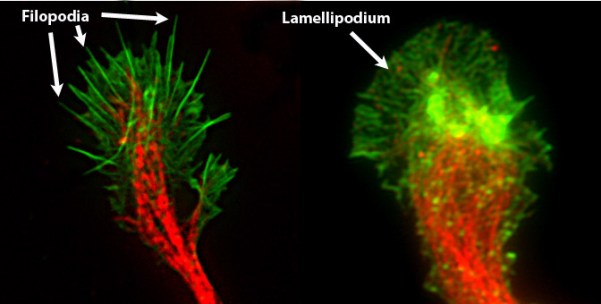
As background, lamellipodia are thin, sheet-like membrane protrusions found at the leading edge (front) of motile cells such as endothelial cells, neurons, immune cells and epithelial cells. These structures are generally devoid of major organelles and are instead composed of a dense and dynamic network of actin filaments.
Filopodia are thin membrane protrusions that act as antennae for a cell to probe the surrounding environment. Filopodia are also prominent in neurite growth cones and individual cells such as fibroblasts.
A fibroblast is the most common type of cell found in connective tissue.
Fibroblasts secrete collagen proteins that are used to maintain a structural framework for many tissues. In neurons deprived of filopodia by partial inhibition of actin filaments polymerization, growth cone extension continues as normal but direction of growth is disrupted and highly irregular.
Combined with 3D bioengineering and microgravity, the teams at BioGravity™ are on track to explode treatment options and clinical innovations in a variety of cell diseases.
Advantages
for the BioGravity™ Platform
In
addition to being readily accessible on the ground, the Explor Space BioGravity™ Platform is a repeatable
and scalable alternative to life science studies involving microgravity aboard the
International Space Station. Due to its low cost, durability and small footprint
microgravity cell studies can be conducted 24/7 for nearly unlimited durations
and under variable intensity from Low Earth Orbit to Moon to Mars gravity. By
placing inside an incubator, the BioGravity™ Platform offers low fluid
shear, lack of sedimentation and low turbulence, as well as a predictable
radiation exposure within the lab.
How to Access the BioGravity™ Platform on Earth:
Clients may rent a
commercial-grade BIOGRAVITY™
PLATFORM for about $1100 USD a month
Clients may purchase a BIOGRAVITY™ PLATFORM with a $10,000 discount for
academia or non-profit.
Lastly, BioGravity clients may
commission a BIOGRAVITY™ EXPERIMENT with clinical or end-to-end
verification from $15,000 USD.
Custom accessories and world-wide
team consulting are also available including the anticipated development of an
“isolated autonomous bioreactor” as well as an “inline assay chip
array” for exosome and macrophage flow cytometry plus other customized sensors.
Rent,
purchase or commission the Explor Space BioGravity ™ Platform
at the Michigan Space Station at www.BioGravityLLC.com
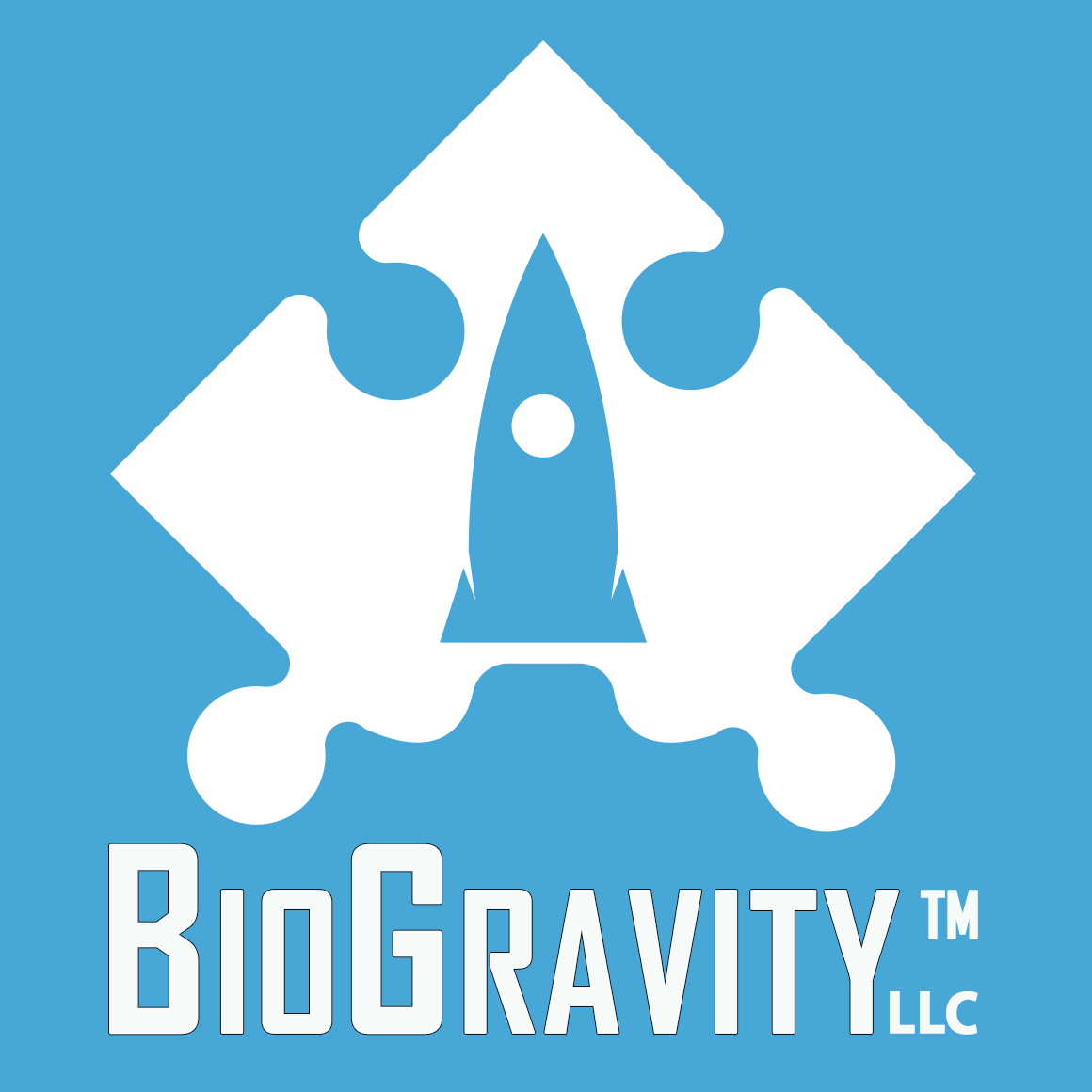
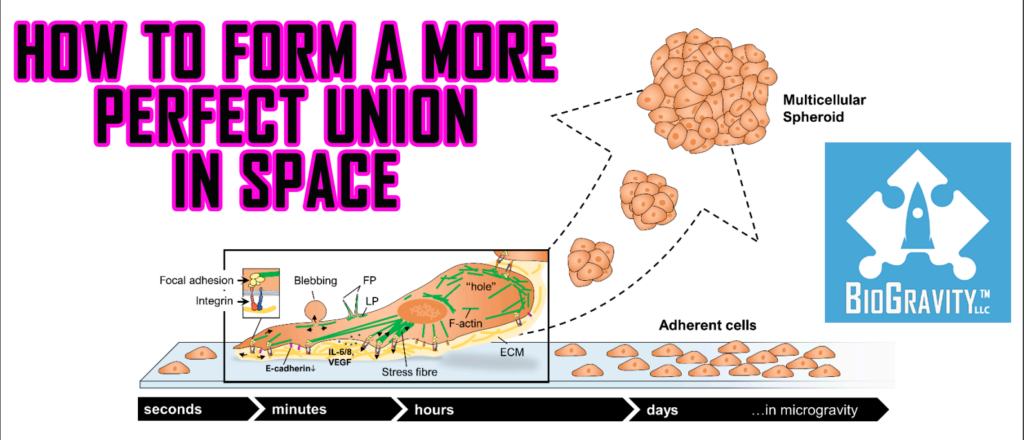
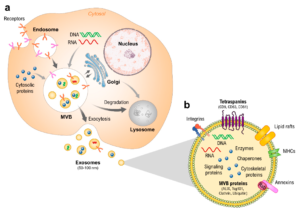
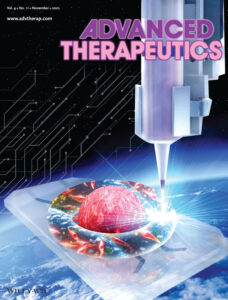

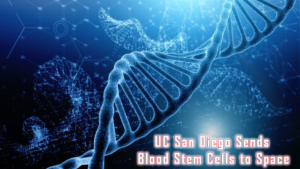
More Stories
What is BioConvergence?
Join BioGravity™ for the Human Future
Stem Cells In Space